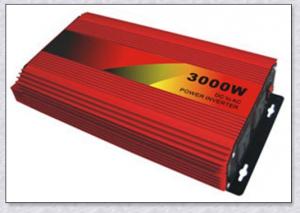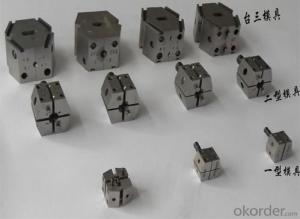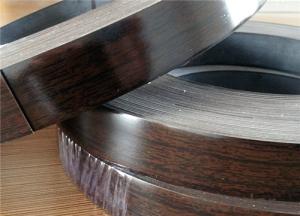Inverter Solar Edge
Inverter Solar Edge Related Searches
Ac Inverter For Solar Panels Solar Panel With Ac Inverter Gas Furnace With Ac Panda Hot Water Bottle Cover Minion Hot Water Bottle Cover Abb Solar Water Pump Inverter Solar Water Pump Philippines Extra Long Hot Water Bottle Solar Panel Dc To Ac Inverter Old Fashioned Hot Water BottleHot Searches
Solar Edge Inverter For Sale Fiberglass Scaffolding For Sale Fiberglass Panels For Sale Fiberglass Greenhouses For Sale Type Of Scaffolding With Pdf Solar Inverter With 2 Battery Pedestal Fan With Water Spray Price Mini Inverter With Battery Online Shopping Solar Edge Inverter Price Ceiling Fan Lowest Price Solar Edge Inverter Sizes Type Of Inverter For Solar Types Of Inverter For Solar Used Solar Inverter For Sale Inverter Size For Solar System Solar Edge Inverter For Sale 5kw Solar Inverter For Sale Solar Inverter For Sale Solar Inverter For Battery Solar Inverter For Split AcInverter Solar Edge Supplier & Manufacturer from China
Okorder.com is a professional Inverter Solar Edge supplier & manufacturer, offers integrated one-stop services including real-time quoting and online cargo tracking. We are funded by CNBM Group, a Fortune 500 enterprise and the largest Inverter Solar Edge firm in China.Hot Products
FAQ
- What is the difference between low voltage grid connection and medium voltage grid connection?
- When the power grid failure or disturbance caused by the power supply and network voltage drop, in the voltage drop range, the power group can be uninterrupted through the inverter and network operation.
- When choosing the right brand of solar inverter, it is important to consider factors such as reliability, efficiency, warranty, and compatibility with your specific solar panel system. Researching customer reviews, comparing specifications and features, and consulting with solar professionals can help in making an informed decision.
- Yes, a solar inverter can be used in regions with extreme weather conditions. However, it is important to choose an inverter that is designed and rated for the specific weather conditions of that region. For example, there are solar inverters available that are built to withstand high temperatures, extreme cold, humidity, and even harsh weather events such as hurricanes. It is crucial to consider the environmental factors and select an inverter that is suitable for the specific climate conditions to ensure optimal performance and longevity.
- Yes, a solar inverter can be used with solar-powered greenhouse systems. A solar inverter is responsible for converting the DC power produced by solar panels into AC power that can be used to run electrical devices. In the context of a solar-powered greenhouse system, the solar inverter would be essential for converting the solar energy collected by the panels into usable electricity to power various components such as fans, pumps, lighting, and climate control systems within the greenhouse.
- The role of a maximum power point tracker (MPPT) in a solar inverter is to optimize the efficiency and power output of a solar panel system. Solar panels generate direct current (DC) electricity, but most appliances and the electrical grid operate on alternating current (AC). The MPPT is responsible for continuously adjusting the operating conditions of the solar panels to extract the maximum power available from the sunlight. It tracks the maximum power point (MPP) at which the solar panels can generate the most electricity efficiently. This is important because the output of a solar panel is highly dependent on factors such as temperature, shading, and the angle of the sun. By continuously monitoring and adjusting the voltage and current of the solar panel system, the MPPT ensures that the solar panels are always operating at the MPP, maximizing the power output. It achieves this by dynamically changing the electrical load on the solar panels to find the optimal operating point. The MPPT also acts as a converter, transforming the DC power generated by the solar panels into the AC power required for use by appliances or for feeding back into the electrical grid. This conversion process involves transforming the voltage and frequency of the electricity to match the requirements of the appliances or the grid. Overall, the role of a maximum power point tracker in a solar inverter is to optimize the efficiency and power output of the solar panel system, ensuring that the maximum amount of energy is harnessed from the sunlight and effectively utilized for various applications.
- When choosing the right output voltage for a solar inverter, several factors need to be considered. These include the electrical requirements of the appliances or devices that will be powered by the inverter, the maximum power capacity of the solar panels, and the efficiency of the inverter itself. It is important to select an output voltage that matches the voltage requirements of the appliances while ensuring that the inverter can handle the power load efficiently. Additionally, considering the compatibility of the inverter with the solar panel system and any battery storage can also influence the choice of the right output voltage.
- The role of a solar inverter in preventing overloading is to regulate the flow of electricity from the solar panels to the grid or the connected load. It continuously monitors the power output of the solar panels and adjusts the voltage and frequency to match the requirements of the load. By doing so, it ensures that the system does not exceed its capacity, preventing overloading and potential damage to the equipment.
- Efficient and reliable, a solar inverter is specifically engineered to manage fluctuations in voltage and frequency resulting from sudden changes in load. When such changes occur, the solar inverter effectively employs a variety of control mechanisms to regulate and stabilize the output voltage and frequency. To begin with, the inverter continuously monitors the incoming solar power, keeping a close eye on the voltage and frequency. If any variations arise due to sudden load changes, the inverter promptly adjusts its internal control systems to compensate. Utilizing advanced power electronics and control algorithms, the inverter ensures that the voltage and frequency remain within the desired range. In order to handle voltage fluctuations caused by sudden load changes, the solar inverter utilizes a technique known as voltage regulation. It automatically adjusts the output voltage, either raising or lowering it as necessary. This guarantees that the inverter delivers a steady and consistent voltage supply to the load, effectively preventing any harm or malfunction. Similarly, to address frequency variations brought on by sudden load changes, the solar inverter employs a technique called frequency regulation. It adjusts the output frequency to match the grid frequency or meet specific frequency requirements. By maintaining the desired frequency, the inverter ensures compatibility and synchronization with the grid or other connected devices. In addition to voltage and frequency regulation, solar inverters also incorporate protective features to handle sudden load changes. They are equipped with built-in overload protection mechanisms capable of detecting excessive loads and preventing damage to both the inverter and the connected devices. These protective features may include safeguards such as overcurrent protection, short-circuit protection, and temperature monitoring. In summary, a solar inverter is purposefully designed to effectively manage voltage and frequency variations arising from sudden load changes. Through its voltage and frequency regulation capabilities, as well as its protective features, the inverter ensures stable and reliable operation. This enables the inverter to adapt efficiently to changing load conditions while safeguarding the integrity of the power supply.














































